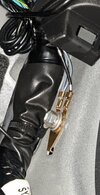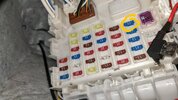utojcartwright
New Member
Hey there,
I've got a Suzuki Swift SZ4 2015 and a Nextbase 212 (NBDYR212-R28). Only recently decided to install it and I've gone for the hardwired option. I wasn't sure which fuse to utilise so I did some googling and found that the ACC2 fuse is best. The problem is after using that and grounding the device it does not switch on when I start the car. It works when I run it off a USB via plug socket. As the fuse I took out is a low-profile mini, I wasn't able to put it in the piggyback portion of the Nextbase adapter, not sure if that's an issue or not.
I've attached a screenshot of the fuse diagram, I used number 9, and one of the ground too. I've not really done any electric work before so I wasn't sure if the ground was fine.
Any help would be appreciated,
Cheers
I've got a Suzuki Swift SZ4 2015 and a Nextbase 212 (NBDYR212-R28). Only recently decided to install it and I've gone for the hardwired option. I wasn't sure which fuse to utilise so I did some googling and found that the ACC2 fuse is best. The problem is after using that and grounding the device it does not switch on when I start the car. It works when I run it off a USB via plug socket. As the fuse I took out is a low-profile mini, I wasn't able to put it in the piggyback portion of the Nextbase adapter, not sure if that's an issue or not.
I've attached a screenshot of the fuse diagram, I used number 9, and one of the ground too. I've not really done any electric work before so I wasn't sure if the ground was fine.
Any help would be appreciated,
Cheers




